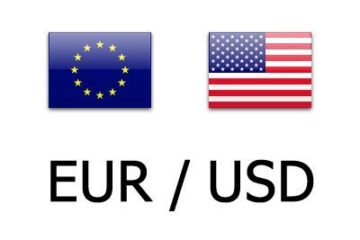Actively reserving a percentage of income to put toward savings has benefits that can be tenfold: It provides a safeguard during times of hardship, allows one to achieve life milestones, and allows one to plan for a comfortable future.
Age, income level, and the amount of expenses can determine a person’s ability to save long-term. According to the Federal Reserve’s Survey of Consumer Finances 2022, American households had an average of $62,410 in transactional accounts — including checking, savings, and money market accounts — yet a median of just $8,000 in transactional accounts.
Related: Dave Ramsey has a warning for people looking to buy a home now
The Federal Reserve Bank of St. Louis has found that personal savings rates as a percentage of income have varied over the past two decades, reaching a historic low of 1.4% in July 2005 and a parabolic increase to an all-time high of 32% in April 2020. After dipping in November 2020, savings rates jumped back to 26.1% in March 2021 but have continued to hover between 3-5% since June 2022.
As of May 2024, the savings rate was 3.9%, comparable to savings during the 2007-2008 financial crisis.
Unsurprisingly, age is the main factor affecting the ability to save and consciously manage finances. Older generations have had more time to accrue savings and likely have paid off the majority of their major expenses, such as raising a family, mortgages, student loans, and auto loans.
Each generation has a different approach to saving
Age can also impact the type of financial milestone consumers save for. Unsurprisingly, Baby Boomers focus on retirement, while Gen Z prioritizes their savings to purchase a car. Gen X and Millennials, however, prioritize building an emergency savings fund, likely to offset the risk of rising costs and widespread layoffs.
A man is symbolically seen saving for retirement by counting coins in a jar. Across generations, saving habits differ.
Shutterstock
Forbes Advisor also found that nearly one in three Americans (28%) has less than $1,000 in savings accounts, a statistic that is more prevalent among Gen Z and Millennials. All age groups cite the cost of living (66%) and debt repayment (31%) as the primary barriers to saving more.
More on personal finance:
How your mortgage is key to early retirementSocial Security benefits report confirms major changes are comingThe average American faces one major 401(k) retirement dilemma
Gen Z: Thirty-seven percent of Gen Z plan to save between $2,501-5,000 in 2024, though a considerable 18% plan to save $10,001 or more this year. Gen Z also feels optimistic about their savings, with over two-thirds of Gen Z (69%) anticipating saving more in 2024 than they did in 2023.
Millennials: Twenty-five percent plan on saving less than $2,500 this year, while another 34% will save $2,501-5,000. Most millennials (74%) anticipate their 2024 savings being the same or more than in 2023.
Gen X: Gen X saving habits mirror those of millennials, with 52% planning on saving up to $5,000 this year. They are slightly more confident in their saving plans, as 76% expect to save the same or more than they did in 2023.
Baby Boomers: About one-third (30%) of Baby Boomers plan to save less than $2,500 this year, and 64% anticipate saving the same or less than they did in 2023. This diminishing focus on saving is likely due to the number of Boomers entering retirement and beginning to live off of their savings.
How to maximize savings
Sixty-eight percent of Americans rely on a standard savings account, while few utilize more strategic options such as high-yield savings accounts (24%) and Certificates of Deposit (14%).
However, lucrative savings options often only provide considerable interest if savers deposit large sums of money. Since most Americans struggle to make ends meet and have money left to save, opening high-return accounts may not make a difference.
Related: How average Americans can better plan for 401(k), retirement income
Due to different lifestyles and preferences, the preferred method of saving also differs among generations. Cash management accounts — such as mobile trading accounts, rob-advisors, and online investment firms — are Gen Z’s second favorite method of saving money after a traditional savings account.
However, retirement accounts are the preferred savings accounts for Millennials, Gen Xers, and Baby Boomers.
Still, Forbes Advisor recommends a few key ways to maximize your savings, regardless of income level:
Automate your monthly savings: Automatically designating a percentage of monthly income towards savings takes all the guesswork out of the task. It also helps to remove spending temptations by immediately putting money aside that can’t be paid. Using money-saving apps that round up purchases can also help accumulate savings without consciously doing so.Get a rewards checking account: Those using debit cards for everyday purchases can earn perks and rewards points on daily purchases, similar to credit card rewards, but without the high interest rates. Once signed up, you can earn cash back, ATM fee reimbursements, or bank bonuses.Consider banking with your local credit union: Credit unions are nonprofits and, therefore, promote the well-being of account holders more than traditional megabanks. Those who bank locally often enjoy higher savings interest rates, lower fees, and more account perks.Take advantage of a high-yield savings account if possible: The most lucrative savings accounts offer over 5% APY, ten times more than the average national rate. Though it may not seem like a significant return initially, it can make a difference over time.
Related: Veteran fund manager picks favorite stocks for 2024


